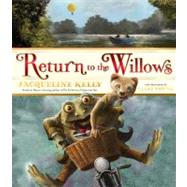
Jacqueline Kelly was born in New Zealand and raised in Canada. She now makes her home with her husband and various cats and dogs in Austin and Fentress, Texas. She is a practicing physician. Her first novel, The Evolution of Calpurnia Tate, was a Newbery Honor winner.
Clint G. Young was born and lives in Dallas, Texas.
Praise for The Evolution of Calpurnia Tate:
“The Evolution of Calpurnia Tate is the most delightful historical novel for tweens in many, many years. . . . Callie’s struggles to find a place in the world where she’ll be encouraged in the gawky joys of intellectual curiosity are fresh, funny, and poignant today.” —The New Yorker
“In her debut novel, Jacqueline Kelly brings to vivid life a boisterous small-town family at the dawn of a new century. And she especially shines in her depiction of the natural world that so intrigues Callie. . . . Readers will want to crank up the AC before cracking the cover, though. That first chapter packs a lot of summer heat.” —The Washington Post
“Each chapter of this winning . . . novel opens with a quotation from On the Origin of Species—a forbidden book that her own grandfather turns out to have hidden away. Together they study Darwin’s masterpiece, leading to a revolution in Callie’s ideas of what she might accomplish on her own.” —The New York Times Book Review
“Callie’s transformation into an adult and her unexpected bravery make for an exciting and enjoyable read. Kelly’s rich images and setting, believable relationships and a touch of magic take this story far.” —Publishers Weekly, starred review
“Interwoven with the scientific theme are threads of daily life in a large family—the bonds with siblings, the conversations overheard, the unspoken understandings and misunderstandings—all told with wry humor and a sharp eye for details that bring the characters and the setting to life. The eye-catching jacket art, which silhouettes Callie and images from nature against a yellow background, is true to the period and the story. Many readers will hope for a sequel to this engaging, satisfying first novel.” —Booklist, starred review
“Readers will finish this witty, deftly crafted debut novel rooting for ‘Callie Vee’ and wishing they knew what kind of adult she would become.” —Kirkus Reviews, starred review
“A charming and inventive story of a child struggling to find her identity at the turn of the 20th century. . . . There’s no uncertainty over the achievement of Kelly’s debut novel.” —School Library Journal, starred review
“Narrator Calpurnia’s voice is fresh and convincing, and Granddaddy is that favorite relative most readers would love to claim as their own. Historical fiction fans are in for a treat.” —BCCB
“Kelly, without anachronism, has created a memorable, warm, spirited young woman who’s refreshingly ahead of her time.” —The Horn Book
“That rare book that will appeal to child and adult alike.” —Austin American-Statesman
“Introduces a turn-of-the-20th-century heroine for modern times.” —Shelf Awareness
The New copy of this book will include any supplemental materials advertised. Please check the title of the book to determine if it should include any access cards, study guides, lab manuals, CDs, etc.
The Used, Rental and eBook copies of this book are not guaranteed to include any supplemental materials. Typically, only the book itself is included. This is true even if the title states it includes any access cards, study guides, lab manuals, CDs, etc.